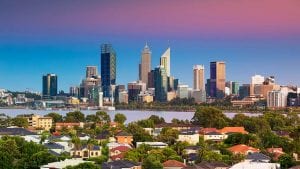Queensland government-backed plans to build a massive 3GW hydrogen electrolyser plant in the state’s Gladstone region have taken a major step forward, with land secured for the facility in the industrial development zone of Aldoga.
The project, a joint venture of government-owned generator Stanwell and Japan-based Iwatani Corporation, gained momentum late last year as a key part of a plan to position Queensland as a key exporter of green hydrogen.
The export-scale facility, which is the largest of its type in the state and expected to create more than 5,000 jobs for regional Queenslanders, has been projected to generate $4.2 billion in hydrogen exports and $10 billion for the state’s economy.
Aldoga, where the plant is to be located, is an industrial zone situated within the Gladstone State Development Area (SDA).
It is also located close to the Labor Palaszczuk government’s proposed Central Queensland Renewable Energy Zone, which will provide ready access to the scale of renewable energy sources – probably more than 5,000MW – required to power the plant.
“Stanwell has now signed an option agreement with Economic Development Queensland locking in land for the facility, which is an exciting step towards the proposed project becoming a reality,” said minister for state development Steven Miles in a statement.
“The 236-hectare site at Aldoga was identified as the preferred location due to its size and proximity to port, power and pipeline infrastructure,” Miles said.
Queensland energy minister Mick de Brenni said the development of a large-scale, renewable hydrogen supply chain in Central Queensland would support the growth of renewables, create jobs and provide access to global export opportunities.
“We know countries like Japan are looking to the Sunshine State to meet their emissions targets, and in the next decade, Queensland must be ready to capitalise,” de Brenni said.
“That’s exactly what the Stanwell-Iwatani project will do, scaling up to over 3,000 megawatts of electrolysis capacity by the early 2030s, with millions of tonnes of renewable hydrogen to be exported around the world.
“Locally, it will also benefit construction, utilities, heavy manufacturing and a range of local service industries.”
Acting Stanwell CEO Adam Aspinall said the generation company had been investigating hydrogen opportunities since 2018 and was currently building a broader consortium Australian companies to progress the Gladstone project to the next stage in second-half 2021.
“As a business, we are progressing a range of future energy solutions to ensure we are in the best position possible to respond to changing market conditions,” Aspinall said.
“We are investigating a range of opportunities to incorporate technologies into our asset portfolio, including hydrogen, energy storage, wind, solar and bioenergy.”










